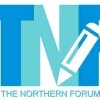
(First of Three Parts)
The Roaring 1960s
Tricycle drivers in Tuguegarao can decide the election fate of local officials in the city. Truth or myth?
Read on.
The tricycle was introduced in Tuguegarao as early as the 1960s by private individuals who saw an enjoyable way to promenade along the traffic-free main thoroughfares on wheels. Powered by human muscles (Tagalog Padyak), anybody in the family can drive it like ordinary bicycles.
Santiago Tang, former elected official of the city and one of Cagayan’s prominent businessman, saw how the trike metamorphosed from its private utility transport into one of the country’s most controversial local public transport.
“Somebody just thought that while the family can use it, it can likewise earn,” Tang who on vacation from the United States noted. That was a few years before Martial Law. Then, those tricycles were not even registered until Japan invaded the country with their Yamaha, Suzuki and Honda motorcycles and things were never the same again.
When the Philippine market was flooded with these machines, the Filipino ingenuity went to work. In the hands of the Filipino, Ybanags included, what was supposed to be an individual transport was reborn as a public vehicle with a carrying capacity of from five to 10 passengers.
But Tang claimed those motorized trikes were under the Land Transportation Commission (LTC); the municipal government has nothing to do with them, not even licensing them.
Later, a circular issued by LTC ordered local government units to take charge of the new-found public transport and by 1974, Tuguegarao City started to issue license to them. Franchising the tricycle was still on the drawing board of the government.
By 1979, the agency was under the Ministry of Transportation and Communication until its eventual existence as Land Transportation Office in 1985. Except for the driver’s license, tricycle drivers are virtually at the mercy of the local government unit.
Ybanag Pride
“The drivers are courteous and disciplined as there were only a few of them, so easy to report them,” Sir Agu, a term of endearment said adding that in fact, a bad report on any tricycle will affect the reputation of the family.
He said the Ibanags placed family reputation on top of the image ladder.
By mid 1980s, tricycle driving has become the most important alternative livelihood Tuguegarao and by 2010, its number has reached a shocking 12,000 reportedly more than Laoag and Cabanatuan cities.
With the increase in the number of tricycles running 24/7 along major city streets onwards since 1980s, came the unprecedented growth of the city. In fact, writing the contemporary history of Tuguegarao will be incomplete without a mention of the role of tricycles in the city.
A local psychologist claimed that as a matter of fact, tricycles have not only become something of a basic need among the residents.
“It metamorphosed from a simple luxury of Tuguegarao’s presumed elite in the 1960s into a sub-culture now on the verge of explosion,” he said.
But the local government unit has forgotten one thing, presumably in their excitement to the phenomenal growth of Tuguegarao from a dusty, laidback and sleepy town into a bustling city that it is today.
“We foresaw the increase in the number of tricycles, along the way forgetting one very vital thing,” Tang said. The size of many city roads has remained the same for the last 50 years and could no longer handle the volume of tricycles. But who’s afraid of tricycle drivers? –Northernforum.net











